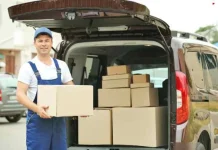Cardboard cutouts are a popular tool for marketing, events, and personal use. Their appeal lies in their affordability, customizability, and visual impact. However, as with any product, the production, use, and disposal of these items come with environmental consequences. This article explores the ecological footprint of cardboard cutouts and highlights sustainable solutions for reducing their impact.
The Environmental Footprint of Cardboard Cutouts
Production and Resource Use
The creation of cardboard cutouts requires significant resources. Cardboard is typically made from wood pulp, a process that can contribute to deforestation if not sourced sustainably. Additionally, the production involves water, energy, and chemical usage, which can have environmental repercussions.
Non-recycled cardboard production often leads to greenhouse gas emissions, particularly if fossil fuels power the manufacturing process. Moreover, inks and adhesives used in custom designs can introduce harmful chemicals into the environment.
Waste and Disposal Challenges
Once discarded, cardboard cutouts can add to the growing issue of waste management. Although cardboard is recyclable, not all cutouts are processed due to contamination from paints, coatings, or adhesives. When improperly disposed of, they can end up in landfills, where they contribute to methane emissions during decomposition.
Transportation Impact
Shipping cardboard cutouts, especially large-scale ones, involves emissions from transportation. The larger and heavier the cutout, the higher its carbon footprint during delivery.
Sustainable Solutions for Cardboard Cutouts
Opting for Recycled Materials
Using recycled cardboard for production significantly reduces the demand for virgin wood pulp. Recycled materials require less water and energy during manufacturing, cutting down on emissions and conserving natural resources. When ordering custom cardboard cutouts, prioritize suppliers that offer recycled or sustainably sourced materials.
Choosing Eco-Friendly Printing Options
The printing process for cardboard cutouts can be made greener by using water-based or soy-based inks instead of petroleum-based alternatives. These inks are less toxic and easier to recycle, making them an excellent choice for minimizing environmental harm.
Promoting Reuse
Encouraging the reuse of cardboard cutouts is a simple yet effective way to extend their lifespan. After an event, these cutouts can be repurposed for future use or donated to schools, theaters, or community groups. This practice reduces waste and maximizes the value derived from the materials.
Supporting Local Production
Opting for locally produced cutouts can help reduce the environmental impact associated with transportation. By minimizing shipping distances, you can significantly cut down on fuel consumption and associated emissions.
Proper Disposal Methods
Recycling Guidelines
To ensure that cardboard cutouts are recycled, remove any non-recyclable components, such as plastic coatings or metallic inks. Flatten the cardboard to save space and place it in appropriate recycling bins. If unsure about recycling protocols in your area, consult local waste management services.
Composting as an Alternative
Cardboard that is free from inks and coatings can be composted, breaking down into organic matter that enriches the soil. Shredding the cardboard before composting accelerates the decomposition process.
Exploring Alternatives to Cardboard Cutouts
Digital Displays
In some scenarios, digital screens can serve as an eco-friendly alternative to physical cutouts. While they require electricity, their long-term reusability makes them a sustainable option for events and advertising.
Biodegradable Materials
Innovations in materials science have introduced biodegradable options, such as cutouts made from plant-based fibers or other renewable resources. These options decompose naturally, leaving no harmful residues.
The Role of Consumers and Businesses
Raising Awareness
Consumers play a pivotal role in driving change by demanding eco-friendly options and supporting businesses committed to sustainability. Similarly, businesses can educate customers about the environmental impact of their choices and offer greener alternatives.
Implementing Sustainable Practices
From sourcing materials responsibly to adopting energy-efficient production methods, businesses can implement practices that minimize their ecological footprint. Offering recycling programs or buy-back initiatives for used cutouts can further enhance sustainability efforts.
Conclusion
Cardboard cutouts offer undeniable benefits, but their environmental impact cannot be ignored. By prioritizing recycled materials, eco-friendly printing, and proper disposal methods, individuals and businesses can mitigate their ecological footprint. Exploring alternatives, such as biodegradable materials or digital displays, adds another layer of sustainability to this industry.
When considering custom cardboard cutouts for your next project, choose options that align with environmentally conscious practices. Every step toward sustainability contributes to a healthier planet for future generations.






















